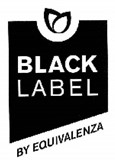Likelihood of confusion for premium brand – BLACK LABEL
Spanish perfume manufacturer Equivalenza Manufactory had developed a special BLACK LABEL brand for its perfume:

Brands with the words ‘BLACK LABEL’ are not rare. They include, for example, the well-known whisky brand ‘Johnnie Walker® Black Label®’, the well-known brand ‘Black Label®’ of the official purveyor of champagne to the British court, ‘Lanson’, the well-known brand ‘Black Label®’ from the cigarette manufacturer ‘Philip Morris’ and the perfume brand ‘S.Oliver Black Label®’ from the fashion manufacturer S.Oliver.

‘BLACK LABEL’ marks are often used to draw the consumer’s attention to a premium product. No other colour looks as extravagant and elegant as black does, or has so much power and depth, without being obtrusive.
However, it was not an owner of another ‘Black Label’ trademark that took offence to the perfume brand. The mark was in fact attacked by the French supermarket chain ‘ITM Enterprises’ on the basis of an earlier blue perfume mark

But how likely was it that these two marks might be confused?
The General Court of the European Union said: No. When buying perfume, the buyer is guided by the visual impression of the product. In the light of such marketing conditions for perfume, the visual aspect of the conflicting signs is more important than any phonetic or conceptual similarity. And in this case, the visual impact of the signs is different. Moreover, the conflicting signs are conceptually different because the sign applied for contains the elements ‘BLACK’ and ‘BY EQUIVALENICA’.
Subsequently, the Court of Justice of the European Union challenged that method of examination. It set aside the judgment and found that there was a likelihood of confusion. But why?
All aspects of similarity between the marks must be examined. That requires an assessment of the aural, visual and conceptual impact of the two signs. However, the General Court had excluded aural and conceptual similarity from its examination from the outset. In reality, because of the similarity in terms of the ‘LABEL’ element, a degree of phonetic and visual similarity between the conflicting signs must be assumed. Given this similarity, the two signs produced a similar overall impression in the mind of the relevant public. Moreover, both signs claimed protection for the same product, namely perfume. Nor was it the case that the earlier mark ‘LABELL’ had any specific meaning attached to it, precluding it from being accorded a low level of protection. There was thus a risk that consumers would confuse the perfume marks in their minds. That was the end of the new premium brand ‘BLACK LABEL BY EQUIVALENCIA’!
But why was there any phonetic and visual similarity at all?
The Court explained that, in the challenged mark, the words ‘BLACK LABEL’ attract the consumer’s attention. They are arranged centrally and are also emphasised by their size. ‘BY EQUIVALENICA’ occupies only a secondary position in relation to those words.
Therefore, when the consumer speaks of the mark, they will pronounce only the words ‘BLACK LABEL’. When they then hear someone talking about the mark ‘LABELL’, it is likely they will remember the phonetic similarity in the element ‘LABEL’. That is sufficient to establish a medium degree of phonetic similarity.
Even if the consumer only sees the ‘BLACK LABEL’ mark, they will be able to visualise those words and remember them. It is true that the other figurative elements are not irrelevant to the consumer. However, when they later see the mark ‘LABELL’, they will probably remember the element ‘LABEL’. Despite the other differences, there persists a medium degree of visual similarity with the ‘LABELL’ mark.
The Court did not find any conceptual similarity. The relevant Czech, Hungarian, Polish and Slovenian public in the case were not familiar with the word ‘LABEL’.
Court of Justice of the European Union, 4 March 2020, C-328/18 P.
Learnings: In order that your new brand doesn’t capsize before it’s even launched, you should, if possible, ensure there are no similarities with earlier marks. For this purpose, it is advisable to formally evaluate the original characteristics of the conflicting signs, i.e. aurally, visually and conceptually. As this case shows, this can quickly lead to the conclusion that there is a degree of similarity between the marks which is not obvious at first glance. In that case, your new sign may already be in great danger.